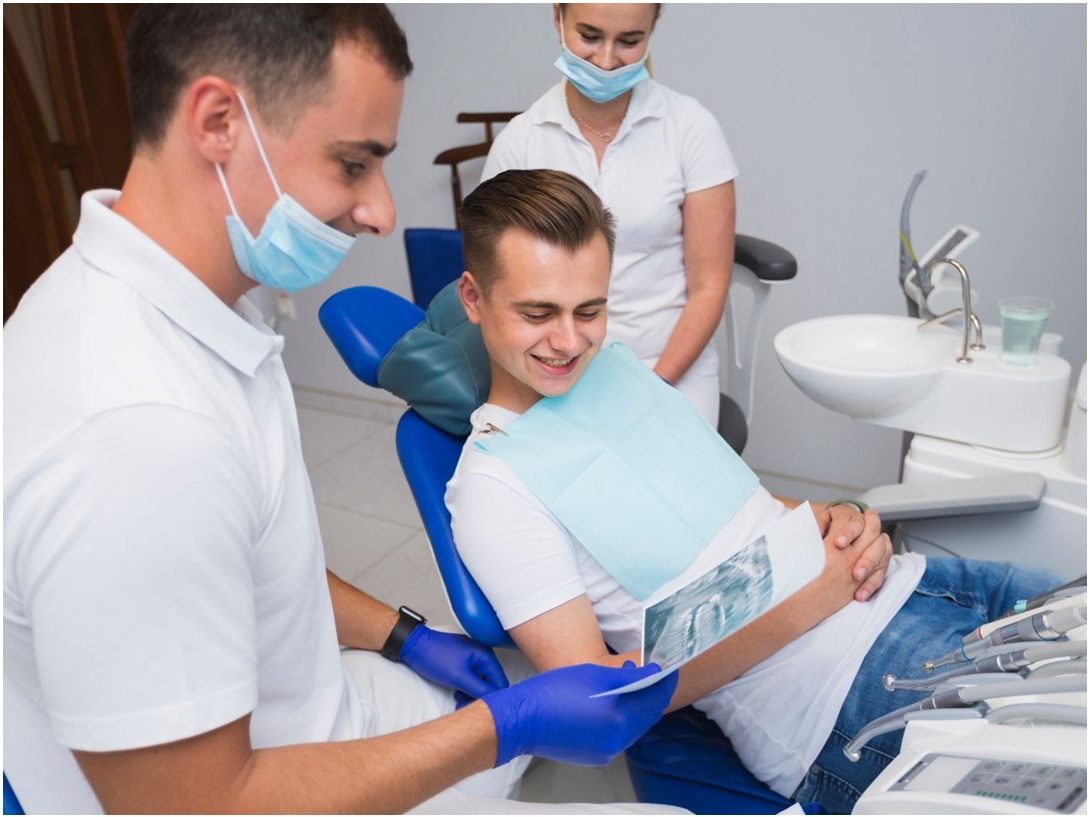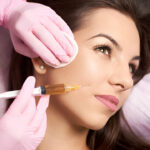
A dental emergency can happen anytime—during a meal, a sports game, or even while brushing your teeth. The pain and panic can make it hard to think clearly, but knowing what to do in those first few minutes can make a big difference. Quick action can sometimes save a tooth, stop bleeding, and prevent infection from spreading.
Key Takeaways:
1. Time Is Critical for Knocked-Out Teeth
If you lose a permanent tooth, handle it by the crown only and try to reinsert it immediately or store it in milk. A tooth has the best chance of survival when reinserted within 30 to 60 minutes, making quick action essential for saving your smile
2. Never Ignore Persistent Tooth Pain
A toothache lasting more than 24 hours, especially when accompanied by swelling, fever, or visible abscess, signals a potential infection that requires immediate professional attention. Rinse with warm salt water and use cold compresses while scheduling an urgent dental visit
3. Protect Exposed Teeth After Losing Fillings or Crowns
When a filling or crown falls out, your tooth becomes vulnerable to infection and further damage. Use temporary dental cement from a pharmacy to cover the exposed area, avoid chewing on that side, and see your dentist within 24 to 48 hours
4. Dental Abscesses Require Emergency Treatment
A dental abscess is a serious infection that can spread to other parts of your body if left untreated. If you notice facial swelling, difficulty swallowing, breathing problems, or fever along with the abscess, seek emergency medical care immediately rather than waiting for a regular appointment
5. Prevention and Preparation Reduce Emergency Risks
Wearing a mouthguard during sports, avoiding chewing hard objects, and maintaining regular dental checkups can prevent most dental emergencies. Keep a simple emergency kit at home with gauze, salt, pain relievers, dental wax, and your dentist’s contact information for quick response when accidents occur
Whether it’s a knocked-out tooth, a broken crown, or severe tooth pain, there are simple steps you can take before reaching your dentist. This guide will show you exactly what to do in different dental emergencies, what to avoid, and when to contact an Emergency dentist in West Ryde right away.
Understanding a Dental Emergency
A dental emergency means any situation involving your teeth, gums, or mouth that needs immediate attention. Some cases cause severe pain, while others risk permanent damage if not treated quickly.
Common Types of Dental Emergencies
- Knocked-out or loose tooth
- Cracked or chipped tooth
- Sudden, severe toothache
- Swollen or bleeding gums
- Lost fillings or crowns
- Abscess (infection in or around the tooth)
- Broken braces or wires causing pain
Some problems might seem small at first, but even a minor chip or irritation can lead to serious complications if ignored.
1. What to Do If You Knock Out a Tooth
Losing a tooth suddenly can be shocking, especially if it happens due to a fall, accident, or sports injury. However, acting fast gives you the best chance of saving that tooth.
Step-by-Step Actions
- Stay calm and find the tooth. Pick it up by the crown (the white part), not the root.
- Rinse gently. Use clean water to rinse off dirt, but don’t scrub or remove any attached tissue.
- Try to reinsert it. If possible, gently place the tooth back into its socket and hold it in place by biting softly on a piece of gauze.
- If reinsertion isn’t possible, keep it moist.
- Place the tooth in a cup of milk or saline solution.
- You can also hold it inside your cheek to keep it moist (if it’s safe to do so).
Why Acting Fast Matters
A tooth that’s reinserted within 30 minutes to an hour has the best chance of survival. If you can’t get to your regular dentist, contact an Emergency dentist in West Ryde immediately for professional care.
2. Handling a Cracked or Chipped Tooth
A cracked or chipped tooth can result from biting something hard or an unexpected impact. Even if it doesn’t hurt, it’s important to take action quickly to prevent further damage.
What You Should Do
- Rinse your mouth with warm water to remove debris.
- Apply a cold compress to your cheek to reduce swelling.
- Save any broken pieces. Bring them to your dentist if possible.
- If bleeding occurs, press a clean gauze or cloth against the area until it stops.
Avoid These Mistakes
- Don’t chew on the injured side.
- Avoid using glue or other household materials to “fix” the tooth yourself.
- Skip very hot or cold drinks—they can worsen pain or sensitivity.
Even small cracks can expose the inner layers of your tooth, which increases infection risk. Visit your dentist as soon as possible for a repair or crown.
3. Managing a Severe Toothache
A toothache can appear suddenly and range from mild to unbearable. Often, it’s a sign of decay, infection, or nerve irritation that needs attention.
Immediate Relief Steps
- Rinse your mouth with warm salt water to clean and soothe the area.
- Floss gently around the tooth to remove trapped food particles.
- Use a cold compress on your cheek to reduce pain and swelling.
- Take over-the-counter pain medication if needed, but avoid placing aspirin directly on your gums—it can cause burns.
When to Seek Help
If the pain doesn’t fade within 24 hours or you notice swelling, fever, or an abscess (a pimple-like bump on your gums), contact your dentist immediately. These could be signs of infection that require antibiotics or emergency treatment.
4. What to Do If a Filling or Crown Falls Out
Losing a filling or crown can be uncomfortable, especially if it leaves your tooth exposed. You might notice sensitivity to air, heat, or cold.
Temporary Fixes You Can Try
- Keep the area clean. Rinse gently with warm water and avoid chewing on that side.
- Use dental cement (available at most pharmacies) to cover the exposed area temporarily.
- If a crown falls out, try to place it back on the tooth using over-the-counter dental adhesive—but only if it fits snugly.
What Not to Do
- Don’t use super glue or any household adhesive.
- Don’t try forcing the crown back if it doesn’t fit properly.
Visit your dentist as soon as you can. The longer the tooth stays unprotected, the higher the chance of infection or breakage.
5. Treating Soft Tissue Injuries (Gums, Lips, or Tongue)
Biting your lip, injuring your gums, or cutting your tongue can cause a lot of bleeding, but most minor injuries heal quickly with simple care.
First-Aid Steps
- Rinse your mouth with mild salt water.
- Apply pressure with a clean cloth or gauze for 10–15 minutes to stop bleeding.
- Use a cold compress to control swelling and reduce pain.
If bleeding doesn’t stop after 15–20 minutes or the wound looks deep, go to an emergency clinic or call your dentist right away.
6. Dealing with a Dental Abscess
A dental abscess is a serious infection that forms at the root of a tooth or in the gums. It often appears as a swollen bump filled with pus and can cause severe pain, fever, and swelling in the face or jaw.
What You Should Do
- Rinse with salt water several times a day to help draw out infection and reduce swelling.
- Avoid pressing or popping the abscess—it can spread bacteria deeper into the tissue.
- Take over-the-counter pain relief to manage discomfort.
When to Seek Immediate Care
A dental abscess is a medical emergency. If you notice swelling that spreads to your face or neck, fever, or difficulty breathing or swallowing, go to the nearest hospital or contact your emergency dentist immediately.
7. Broken Braces, Wires, or Retainers
Braces are designed to handle daily wear, but sometimes a wire can snap or a bracket can loosen. This can cause irritation or small cuts inside your mouth.
Quick Fixes
- If a wire is poking your cheek or gums, use orthodontic wax (available at most drugstores) to cover the sharp end.
- Don’t cut the wire unless it’s causing severe pain and you can’t see a dentist soon.
- If a bracket comes loose, leave it in place and secure it with wax if needed.
Avoid eating sticky or hard foods until your orthodontist repairs the issue.
What You Should Keep in a Dental Emergency Kit
Having a small dental emergency kit at home can save time and reduce stress. Here’s what to include:
- Clean gauze pads
- Small container with a lid (for broken teeth or crowns)
- Salt packets
- Over-the-counter pain reliever
- Cold compress or ice pack
- Dental wax or cement
- A card with your dentist’s emergency number
Being prepared can make it easier to handle an accident calmly and effectively.
When to See a Dentist Immediately
Some dental problems can wait a day or two, but others need same-day attention. Seek help immediately if:
- You have uncontrolled bleeding.
- You experience swelling around your face or jaw.
- You feel sharp, constant pain that medication doesn’t relieve.
- You have a knocked-out or loose permanent tooth.
In these cases, time is crucial. Contacting your dentist or finding an Emergency dentist in West Ryde can help protect your oral health and prevent permanent damage.
How to Prevent Future Dental Emergencies
While accidents can’t always be avoided, good dental habits can lower your risk.
- Wear a mouthguard during sports or physical activity.
- Avoid chewing hard objects like ice or pens.
- Visit your dentist regularly for cleanings and checkups.
- Don’t ignore small problems. A minor toothache today can become an emergency tomorrow.
Preventive care is the easiest way to avoid pain, stress, and unexpected dental bills.
Stay Calm and Act Quickly
Dental emergencies can be painful and frightening, but staying calm and knowing what to do can save your teeth and ease your discomfort. Simple steps like rinsing, applying pressure, or keeping a knocked-out tooth moist can make a big difference before you reach professional care.
Remember, quick action matters most. Whether it’s a severe toothache, a chipped tooth, or an injury, follow these steps and contact your dentist as soon as possible.
If you’re ever unsure or can’t reach your regular dentist, find an experienced Emergency dentist in West Ryde for immediate help. Acting fast can protect your smile, prevent infection, and give you peace of mind when you need it most.
How can I tell if my dental problem is a true emergency or can wait until regular office hours?
Seek immediate care if you experience uncontrolled bleeding that doesn’t stop after 15 minutes, severe swelling in your face or jaw, a knocked-out permanent tooth, or intense pain that over-the-counter medication cannot relieve. Signs of infection like fever, pus, or an abscess also require same-day attention. Minor chips without pain, small cracks, or mild sensitivity can typically wait a day or two, but you should still contact your dentist to schedule an appointment as soon as possible to prevent complications.
What should I avoid doing during a dental emergency?
Never place aspirin directly on your gums as it can cause chemical burns, and avoid using super glue or household adhesives to reattach crowns or fix broken teeth. Don’t scrub or handle a knocked-out tooth by its root, as this can damage the delicate tissues needed for successful reinsertion. Additionally, resist the urge to pop or squeeze a dental abscess, which can spread infection deeper into surrounding tissues. If you have a broken wire from braces, don’t attempt to cut it yourself unless it’s causing severe injury and professional help is unavailable.
Can a knocked-out baby tooth be saved the same way as a permanent tooth?
Baby teeth should not be reinserted if knocked out, as doing so can damage the developing permanent tooth underneath. Instead, control any bleeding with clean gauze, rinse the child’s mouth gently with water, and contact your dentist to ensure no fragments remain and to check for other injuries. However, for permanent teeth in children or adults, immediate reinsertion or proper storage in milk gives the best chance of saving the tooth, so quick action remains critical.





